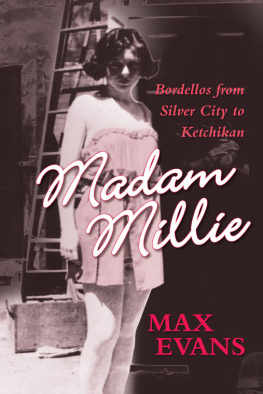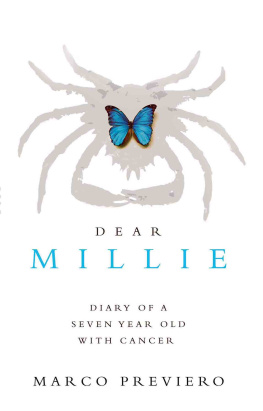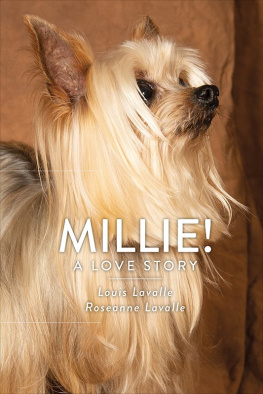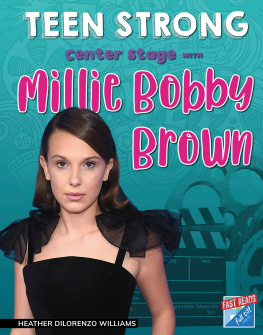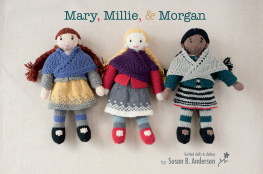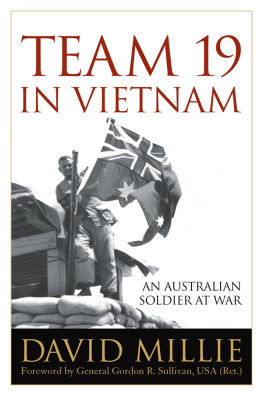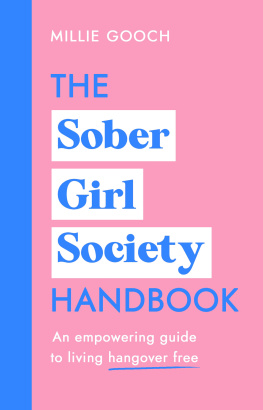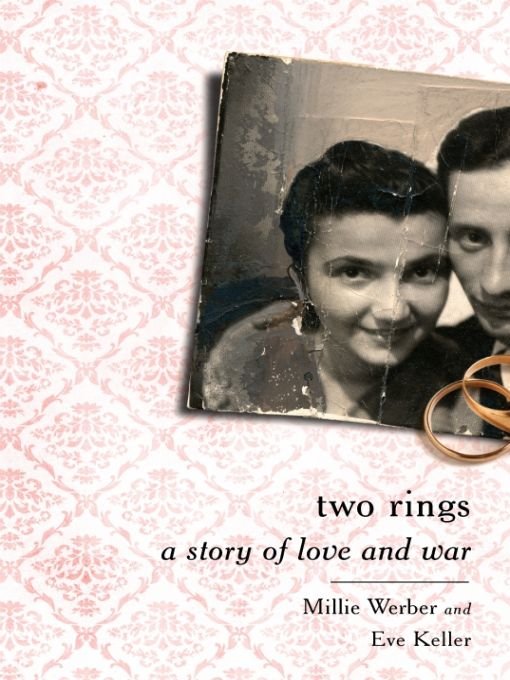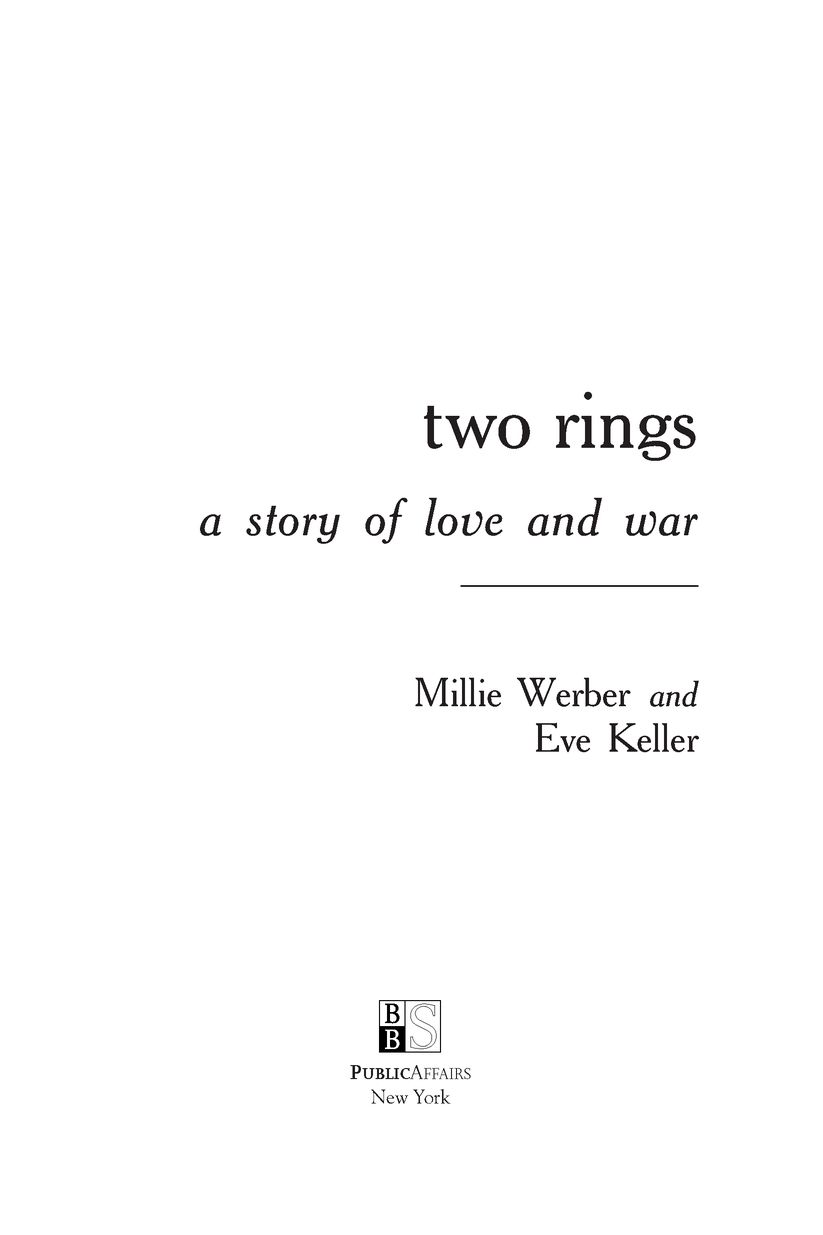Table of Contents
To my dear children, grandchildren, and great-grandchildren, whom I cherish and love, and whom I could not have dared to believe I would ever have.
And to my two great lovesone that was consumed in a moment and the other that flourished for sixty years.
I want to thank my beloved sons Martin and David for urging me to tell my stories for the sake of our family and for the sake of history. I am especially grateful to Martin for bringing Eve and me together as well as for his steadfast devotion to this project throughout every stage of its development.
Deepest thanks, of course, to Eve for the enduring love and friendship we share and for managing to find the voice of my heart. Seeing myself expressed in her words is truly a wonderous gift.
Millie Werber
To David
Best reader, best friend
Eve Keller
Introduction
EVE KELLER
I FIRST MET MILLIE WERBER AT HER SON MARTINS HOUSE. He and his wife, Bracha, are family friends of mine, and once a month on Friday nights, they invite a group of twenty or more to their home to share a potluck Shabbat dinner, filled with casual conversation and song. Millie had been coming to these dinners for several years, ever since her husband Jack died in the autumn of 2006, and I had seen her, sitting quietly at the end of the table, listening, attentive, but always a little held back, an observer more than an easy participant in the boisterous goings-on. A diminutive woman, barely touching five feet tall, Millie was always impeccably dresseda tailored dark blue dress, or perhaps a simple sweater jacket and slacks. Her clothes, like her demeanor, were graceful and quiet. We had been polite with each other, and I could tell there was a warmth to herher eyes would brighten readily whenever she greeted the many people who came over to herbut she seemed rather reserved, and her stillness made her seem somewhat fragile, too; our interaction had never gotten far beyond the how-nice-to-see-yous.
Martin first proposed the idea of my interviewing his mother and writing a book about her wartime experiences. Though urged over the years by members of her family, Millie had been reluctant to speak in detail about her life. It can be that way with survivors, Im toldnot wanting to impose themselves on others, not wanting to burden people with the horrors of the past. But Martin thought that perhaps now, finally, Millie might be agreeable, and he thought that the two of us might hit it off. He had a feeling about us, I suppose.
I was reluctant, too, at first. Im an academic, a professor of English literature, not a history buff and far from a Holocaust scholar. And though Jewish, my family has little connection to the traumas of the war. No one in my family died in the Holocaust. Three of my four grandparents were born in the United States; the fourth came from Hungary late in the nineteenth century. Growing up in suburban New York, I barely had any experience of anti-Semitism: When I was in high school and played violin in a county orchestra, my stand partner, a devout Catholic, asked me once if she could see my horns. But this was harmless, a parochial silliness; whatever malevolence lived in the age-old slur she had heard, none of it lived in her.
So I was tentative starting this project with Millie, because I could see no way in; there was no clear connection between Millie and me that would make such a project viable. If I had experienced nothing of real anti-Semitism, nothing of true hardship, nothing of danger or the kind of dread that keeps you awake and trembling in your bed at night, how was I to understand Millie, who was forged in these things, who was made by them and still lives them? How was I to understand the experience of what she would tell me, the feeling of her experience?
Nonetheless, we decided to try. We agreed that I would visit Millie regularly in her home, an elegantly appointed ranch on suburban Long Island.
Where shall we begin? I asked the first time. And without further prompting, the stories came pouring out. Like a dam undone, a torrent of stories, jumbled together, all intermixed. One ran readily into the next, the contours wholly unclear. After holding back for so long, it seemed, Millie wanted to tell everything. Something had been unleashed, and it was runningnot wildly, not chaotically exactly, but with such profusion it was difficult to sort. I was lost in the surge, and Millie was, too, I know. Our first session lasted four hours; many hundreds more together followed.
At first our meetings were somewhat formalthe interviews were question-and-answer sessions. I reviewed the material from each session and returned to her with more questionsclarifying dates, pressing her for details, ensuring I understood to whom all the pronouns referred. Reconstructing the basic chronology proved relatively easy: September 1939, Germany invades Poland; spring 1941, two ghettos are established in an industrial city called Radom; summer 1942, the deportations begin, slave-labor factories are formed; a young girl marries; a good man is betrayed; too many die; the war grinds on. The incidents lay on the surface of memory.
But Millies inner life was harder to find.
Millie told me many of her stories multiple times; often they seemed almost canonical in her tellingthe words of the story recited nearly verbatim. It was as if her stories had crystallized, had become fixed in her memory in very specific terms. The telling was often difficultwe always sat with a box of tissues between usbut somehow, too, the immutable form of the stories seemed to work like an emotional buffer, providing some small measure of protection from the unformulated feelings beneath. Millie didnt always have ready access to these feelings, yet it was precisely these that I most wanted to knowthat I most needed to know if I were to know her and give voice to the unarticulated reaches of her inner life.
To reach inward, I realized, much would be required of us both: We needed time for Millie to tell and retell her stories; we needed honesty and candor, too, and a growing, mutual trust. Above all, we needed to believe that somehow it would be possible, despite our differences, truly to know and be known by the other.
And for that we needed love.
I decided to step back and let Millie speak without much direction from me. I asked open, broad-based questionswhat was on her mind that day; what had she been thinking about as she waited for me to arrive; what drifted through her thoughts as she lay in bed the night before? I didnt want to rush her; I wanted to let her mind go wherever it willed. And slowly I began to figure out the patterns underlying the associations of her memory, the emotional keystones that structure her experience of the world.
We soon started to see each other quite frequently, some days devoted to interviews, some devoted to fun. We found ourselves becoming friendsa Holocaust survivor in her early eighties, a suburban New Yorker touching fifty. Wed go to Lord & Taylorone of Millies favorite placeswhere wed survey the recent arrivals, assessing the seasons styles of cut and color. Wed stroll arm in arm through the departmentsdresses, sportswear, accessoriesand then take the elevator to the third-floor restaurant and eat grilled vegetable sandwiches among the white-haired ladies sitting with their shopping bags. We went to an eight-week film series on Holocaust movies from the 1940s at the Manhattan Jewish Community Center; we went to matinees on Broadway; once, we went to hear


